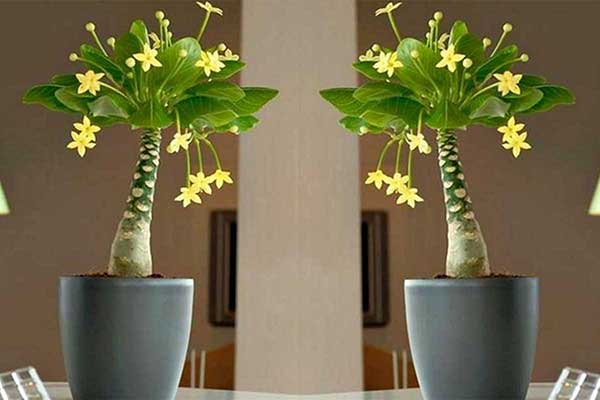
High above the sea, perched on the rugged cliffs of Kauai, Hawaii, grows a strange and wonderful plant. With a thick, water-storing gray trunk and a crown of bright green leaves, it looks, as botanist Steve Perlman once said, “like a cabbage on a bowling pin.”
This plant is Brighamia insignis — rare, endangered, and found nowhere else in the world. Like hundreds of other native Hawaiian species, it was on the verge of disappearing forever. But Perlman, refusing to let it go extinct like more than 100 other Hawaiian plants, stepped in.
Hawaii is a world of its own. Its species evolved in isolation for millions of years — until about 1,500 years ago, when the first Polynesian settlers arrived. For them, Brighamia was more than beautiful; it was medicine. Its raw leaves were used to treat tuberculosis, and crushed with salt, they helped heal infected wounds. Some believe it was even cultivated for these healing properties.
But human arrival brought change. Wild goats, rats, invasive weeds — all disrupted the delicate ecosystem. And Brighamia lost something crucial: its pollinator.
Its fragrant flowers, shaped like long trumpets ending in a five-pointed star, held nectar deep within — only reachable by the long tongue of a rare moth: Tinostoma smaragditis, also known as the fabulous green sphinx of Kauai. For decades, it was thought extinct. Without it, no pollination means no seeds, and no future for the plant.
So Perlman took on the role of pollinator himself.

Starting in the 1970s, he paddled across rough seas in a red canoe, scaling cliffs without even a rope, in search of the elusive plant. Videos of his climbs show rocks crashing down around him — terrifying and thrilling at once. Only at 900 meters above sea level could he finally anchor himself and begin hand-pollinating flowers, returning months later to collect the seeds.
Back then, there were still hundreds of wild Brighamia plants. But after two devastating hurricanes hit the island, only one is known to survive on Kauai. On the island of Ni’ihau, where the plant once thrived, it has vanished.
Thanks to Perlman’s bravery, however, Brighamia insignis lives on. Hundreds of these plants now grow in cultivation, especially in Europe, where they’ve become beloved houseplants. Conservation teams in Hawaii have even reintroduced many of them back into the wild.
“I’m not letting this species disappear,” Perlman says.
Over his 44-year career, he’s helped save dozens of endangered plants, but Brighamia insignis and its cousin Brighamia rockii are his favorites.
“I love working with them on those cliffs,” he says. “I love their swollen bases, their big fragrant flowers… and the fact that they grow in the most unbelievable places. Helping save them has been one of the most exciting things in my life.”
For Perlman, this isn’t just science — it’s personal. He’s seen 20 species go extinct, each one like losing a family member. He fights for Brighamia simply because it exists — and because it deserves to keep existing.
This curious little plant may have lost its pollinating moth…
But at least, it found a true friend.
